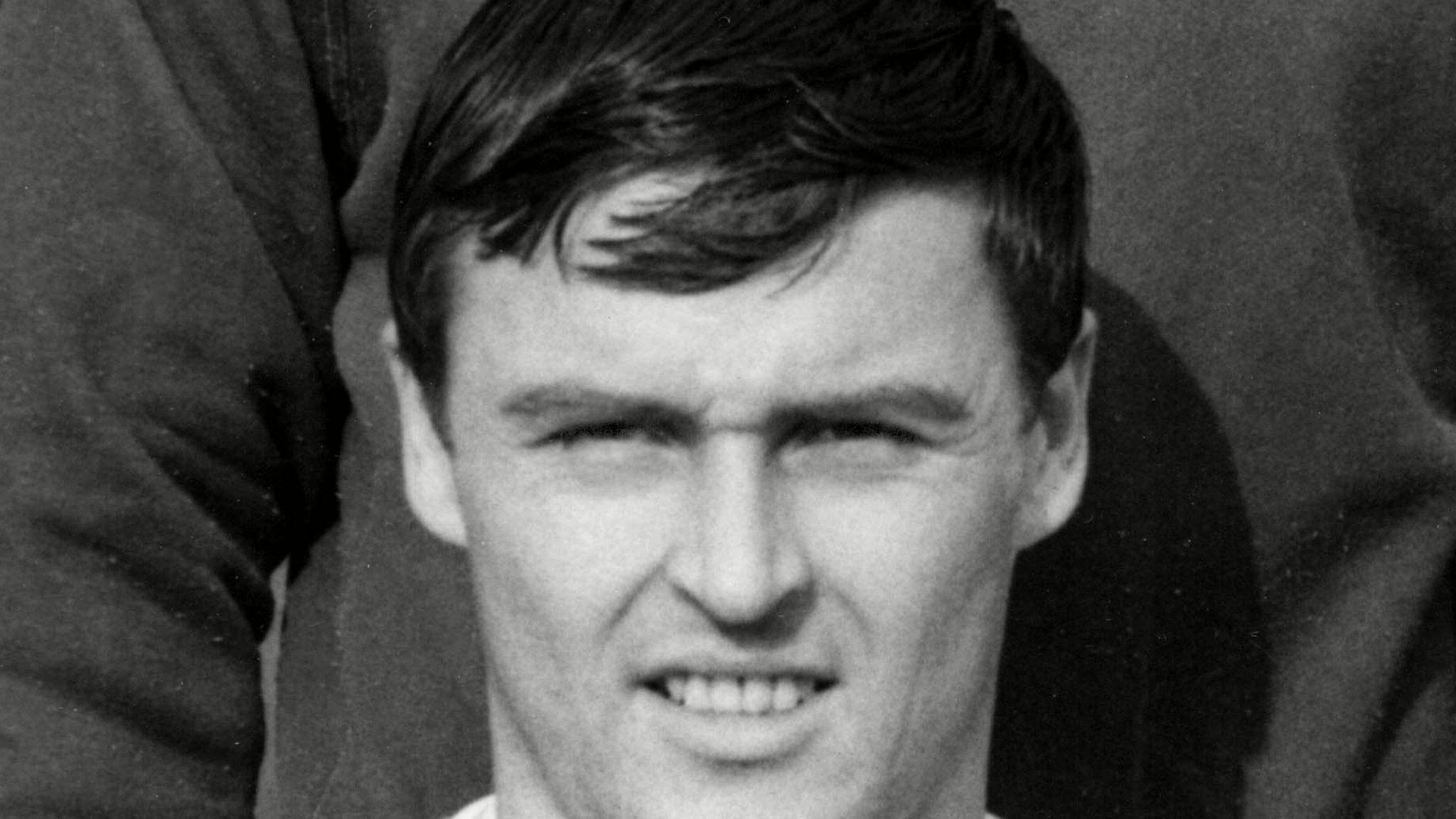Swansea City: Lost photo captures team on brink of glory
- Published
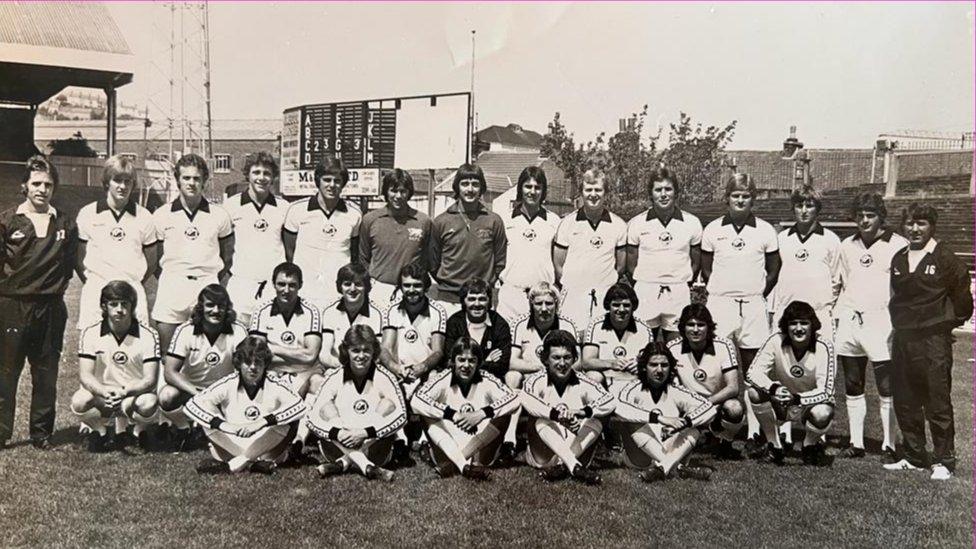
The Fourth Division Swansea City squad in 1977 that made the big time five years later
When they lined up for this pre-season photograph, little did this Swansea City squad know they were about to embark on what would be arguably the club's most successful period.
In August 1977 they were just another team from the Fourth Division.
Less than five years later, they would be heading to a top-half finish in the old first division.
This signed photograph was discovered in a box of abandoned mechanical parts.
It had remained hidden in the workshop of Swansea-based Italian engineer Rob Sotigu for over a decade.
"I grew up in Sardinia, so I didn't yet know enough about my adopted home to appreciate its true value," he said.

The photo is signed by Alan Curtis, Robbie James, Jeremy Charles and Nigel Stephenson amongst others
"I bought it in an auction lot of miscellaneous cogs and valves, in the sort of batch where you bid on everything or nothing."
Swansea memorabilia collector David Viner estimates the photo could be worth between £100 and £150.
The image, bearing the autographs of Alan Curtis, Robbie James, Jeremy Charles and Nigel Stephenson among others, shows the Swans team as it was at the start of the 1977-78 season, just before John Toshack joined them in February.
As depicted in the recently released film, Tosh, the Liverpool and Wales striker became the Swans' player-manager in 1978.
He led Swansea to three promotions in four seasons, with possibly his most famous contribution on the pitch coming with the diving header which secured the third division trophy against Chesterfield in May 1979.
While the film charting the Swans' journey from the bottom of the football league to the First Division was three years in the making, this photograph was rediscovered by chance.
Following the birth of his daughter, Mr Sotigu is looking for space to start new projects.
"I wasn't sure what to do with it. I felt from the signatures on the back of the photo that it must have once meant a lot to somebody," he said.
"So I started doing a bit of research into the team and the shirts at that time, I heard about Pete's film, and it dawned on me that I may actually have something quite special."
Pete Jones, the director of 'Tosh', explained why that is so significant.
"Rob's photo shows the genesis, the embryo of that First Division team," he said.
"At the time it was taken the team was managed by Harry Griffiths. He stood aside and agreed to become Tosh's assistant manager because he could see the side needed some stardust and experience."
"Harry had been at the club since the '40s, as player, coach, physio and manager, and had brought through many of the team who would go on to compete at football's top table."
But there was to be a tragic twist in the Swansea story.
"As that side were on the brink of Fourth Division promotion on 25 April 1978, Harry Griffiths suffered a heart attack just before the Swans' victory over Scunthorpe," Mr Jones said.
Although John Toshack would be credited with the club's three promotions in four years, at Harry Griffiths' funeral he said: "This is Harry's team, not mine. It's his triumph. He was Swansea City."
Pete Jones shares that sentiment, saying although his film is called Tosh, the first half of it is dedicated to Harry Griffiths.
The movie follows the documentary style adopted by the Jack To A King film, which charted The Swans rise to the Premier League in the early 2000s.
Mr Jones said: "We toyed with the idea of making it a drama, but who the hell could you get to play Tosh? Not even Michael Sheen would be up to that!"
Tosh is on limited cinema release in Swansea and Liverpool during May, before becoming available on DVD and download in June.

LEGENDS OF WELSH SPORT: Game changers who revolutionised their sports and their country
SCRUM V PODCAST: The latest rugby news and views

Related topics
- Attribution
- Published12 May 2022
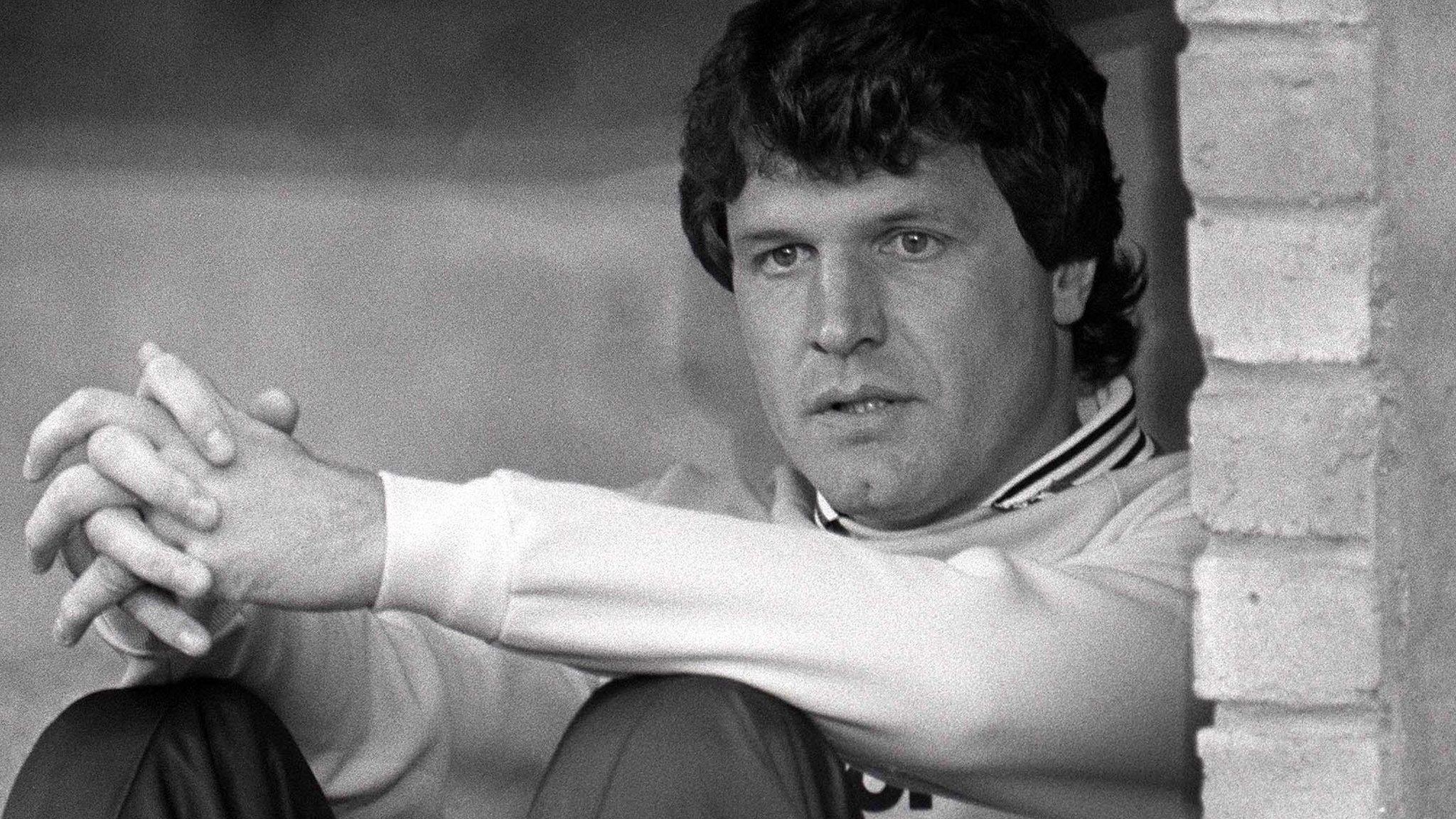
- Attribution
- Published16 May 2022
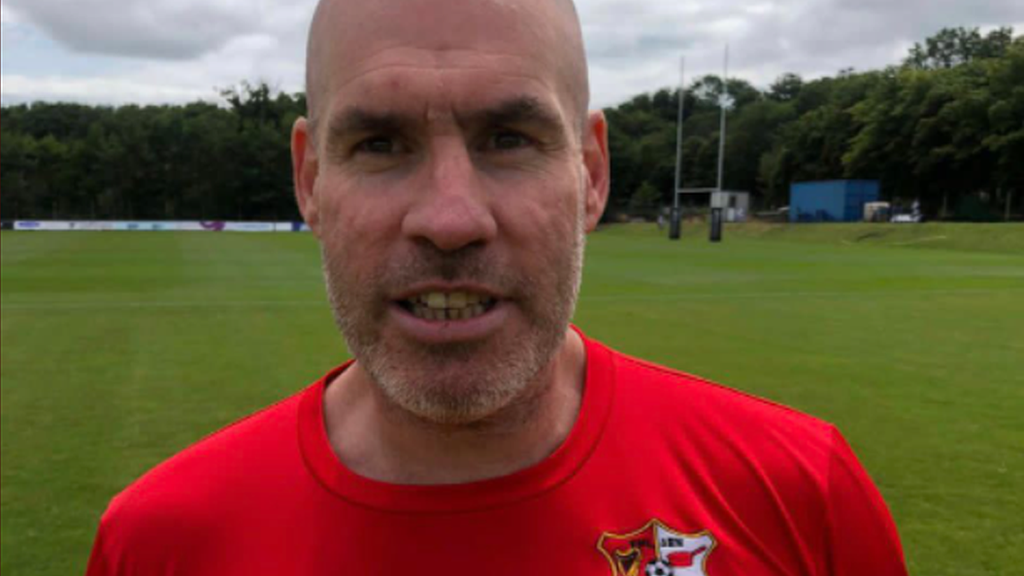
- Published13 May 2022
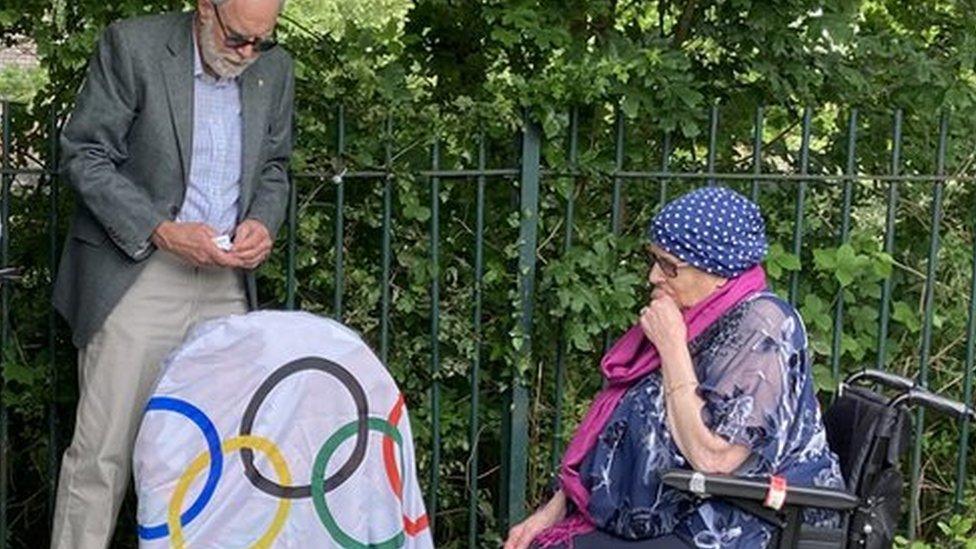
- Attribution
- Published11 January 2022
